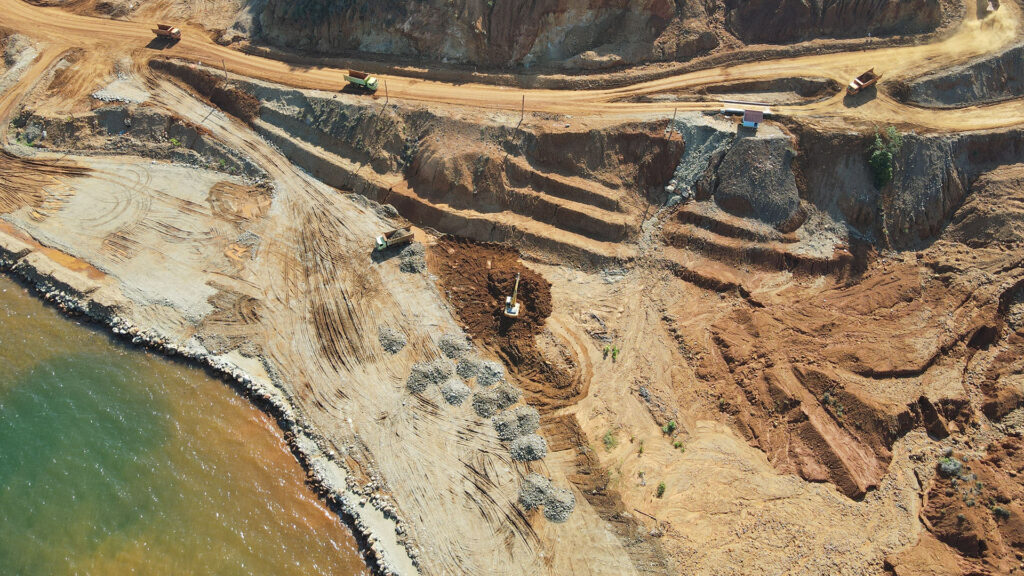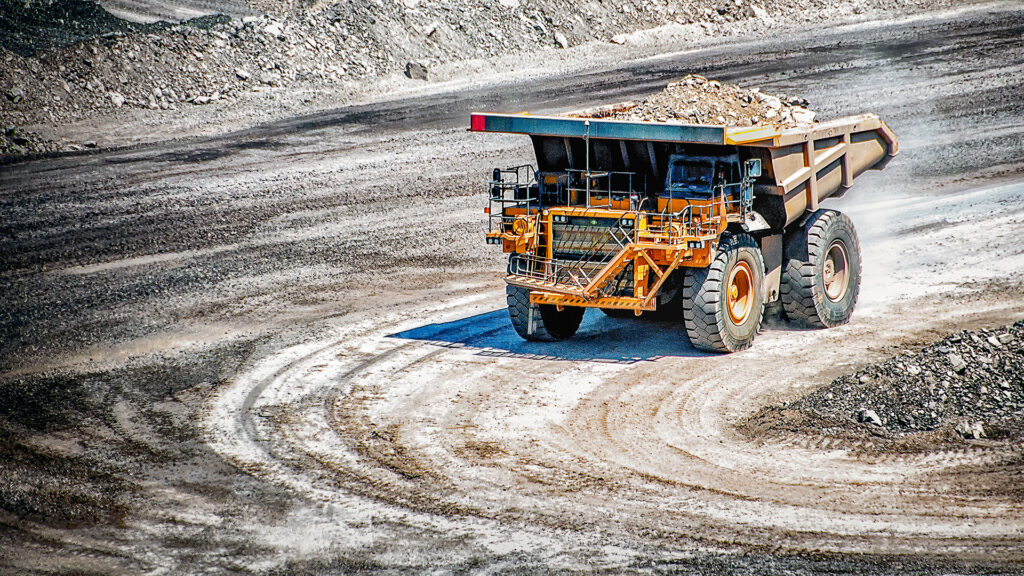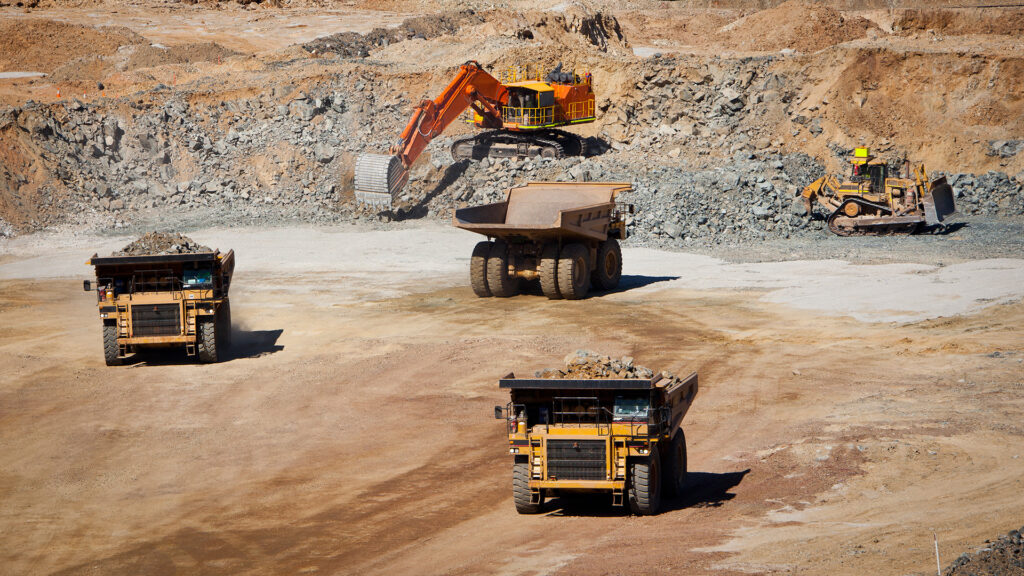A Guide to Investing in a Mining Project
An overview of four of Asia Pacific’s key mining areas: Indonesia, Mongolia, Vietnam, and Western Australia
Global mining hotspots
Over the last decade, increasing demand for mining commodities has led to rapid and large-scale development of mining exploration and recovery activities in Asia and Australasia.
In many cases, the legislative regimes have had to react to this by developing improved legal frameworks to allow foreign investment in mineral extraction. However, the position varies significantly between the more mature mining locations, such as Indonesia and Australia, and emerging markets such as Mongolia and Vietnam, which are faced with the challenge of trying to introduce a clear set of laws and policies to cover the technical and commercial issues of mining activities, while trying to keep pace with the rapid economic growth and demand from foreign investors.
In this guide, we compare some of the legal issues faced by foreign investors when considering investment in a mining project in four of the rapidly developing mining hotspots within the Asia-Pacific region.
Where to start? – an overview of the legal system
Indonesia
Indonesia was a colony of the Dutch until World War II and consequently its legislative styles reflect the European Civil Law system of the 19th and early 20th centuries. The Indonesian Civil Code was derived from the Civil Code of the Netherlands in the 19th century, which in turn was a derivation of the French Napoleonic Code. Law in Indonesia is drafted broadly and in general does not set out specific terms. As such, it provides a framework of high level governing principles in respect of a subject matter. Subordinate legislation then sets out the substantive implementing provisions.
As a resource rich country composed of a variety of different ethnic groups and regional identities, control over local resources and equitable distribution of profits between regions in Indonesia and between Indonesia and foreign investors are political issues. Indonesia’s current mining regime is a product of this context and reflects underlying issues which Indonesians are grappling with as it seeks to balance the interests of its various stakeholders.
Mongolia
Mongolia’s legal system, following the collapse of communism over 20 years ago now, embodies principles of democracy, privatisation, protection of human rights and market economy. Undoubtedly, Mongolia’s legal infrastructure has been influenced by the transition from a ‘one time’ empire to a new modern state. The country’s unified system of law has the flavour of the Romano-Germanic legal system, in particular, the division between civil and public law, with statutes being the main source of law and precedents playing a much lesser role.
Much of Mongolia’s future growth is dependent on a stable legal and fiscal infrastructure. This vast, mineral rich, largely uninhabited and landlocked country, which still embraces its nomadic lifestyle traditions, has taken significant steps in recent years to improve its legal framework, although this is influenced by political pressures and often protracted decision-making processes. Further changes in the legal system are required.
Vietnam
The Socialist Republic of Vietnam was formally established in July 1976, as a result of the official reunification of North and South Vietnam. It has only one political party, the Vietnamese Communist Party. The Communist Party, which is the principal non-state body, operates in accordance with the laws. Government powers in Vietnam are divided into legislative, executive and judiciary powers.
The centre of power is the Political Bureau (Politburo). Members are elected by the committee of the Communist Party. Policy decisions are initiated at Politburo/Central Committee level, and referred to a National Assembly which generally meets for one month, twice a year, and has the authority to pass the legislation referred to it. The National Assembly is the highest body within the state. At a regional level there are a number of Provincial People’s Councils, each with a People’s Committee, which implements the constitution and the laws within the province, and below this District Councils.
All policies and laws are issued by the National Assembly and supplemented by guidance notes from the government in relation to their implementation. The Assembly appoints the President (head of state), the Prime Minister (head of government), the Chief Justice of the Supreme People’s Court of Vietnam, and the Cabinet (the executive). The Communist Party is able to exercise a great deal of influence over the executive, with members of the party holding all senior government positions.
Vietnam’s legal system broadly resembles a European style of civil law system and is based on a series of written laws which are proposed by the Communist Party and enacted by the National Assembly. The legal system is evolving fast and the efficiency of enacting and publishing legislation has been significantly improved. This has improved transparency and confidence in the legal system. However, laws are usually drafted in such general terms that they are not enforceable without implementing decrees and circulars. This legislative process gives the executive the unwritten power to interpret law.
Western Australia
Australia was colonised by the British. In 1901, Australia became a federation through the enactment of the Commonwealth of Australia Constitution Act.
The Constitution specifies those matters which fall within the exclusive legislative power of the Federal Government (such as taxation, defence and external affairs) and those matters that fall within the concurrent legislative powers of the Federal and State Governments.
Legislative power in relation to mining lies with the various State Governments, and consequently each state has its own mining law. The Federal Government, however, has the power to pass laws affecting mining projects, including laws relating to the environment, taxation and native title. If there is any inconsistency between federal law and state law, the federal law will prevail to the extent of the inconsistency.
Western Australia is an Australian state. As with the Commonwealth and other states, Western Australia has a common law system.
Overview of the mining legislation
Indonesia
Before 2009, a dual system of mining rights was used under Law No. 11 of 1967 regarding Basic Provisions of Mining (the Mining Law 1967). The first one is a mining licensing system based on licenses known as Kuasa Pertambangan or KP, which was closed to foreign investors. At the same time, the Mining Law 1967 also used another form of mining rights where foreign investment was allowed for mining projects through Contract of Work, under which the Indonesian Government entered into a contract with a special purpose company incorporated by foreign investors for the purpose of carrying out mining activities.
On 12 January 2009, Indonesia passed Law No. 4 of 2009 regarding Mineral and Coal Mining (the Mining Law 2009), putting an end to the Mining Law 1967 regime. Under the Mining Law 2009, mining rights are regulated under a licensing system and take the form of Mining Business Permits, known by their Indonesian acronym as IUPs (Izin Usaha Pertambangan). IUPs are either newly issued under the Mining Law 2009 (which has not yet been implemented) or have been issued as a result of conversion of KPs. Existing Contracts of Work have been preserved under the Mining Law 2009 until the expiry of their terms, and will be converted into IUPs upon extension. However no new Contracts of Work will be issued.
Under the Mining Law 2009, IUPs consist of Exploration IUP and Production Operation IUP. There are also small-scale mining rights known as People’s Mining Right (Izin Pertambangan Rakyat – IPR).
Mongolia
Mining laws in Mongolia have undergone a major transition in recent years, but are still a work in progress. In 1997, the Minerals Law of Mongolia (the Minerals Law 1997) was introduced, under which taxation and royalty burdens were low, making Mongolia a favourable place for investors. Forming the authority on mining law for almost a decade, the Minerals Law 1997 was superseded in 2006 by a new Minerals Law (the Minerals Law 2006).
The Minerals Law 2006 was legislated for with the aim of obtaining sovereignty over Mongolia’s geological wealth and maximising revenue. It reformed the granting of exploration and mining licences and delved into the concept of ‘state participation’, which gives the government a particular equity stake in projects (dependent on state funding) involving minerals of ‘strategic importance’. The government is currently reviewing the Minerals Law 2006, but no specifics have yet been made public.
Another law which has affected the mining sector is the Windfall Tax, enacted in 2006. It imposed a 68% tax on metals sales prices. This has since been repealed and replaced by a new surtax royalty scheme, incorporated into the Minerals Law 2006, discussed below.
The newly proposed, but not yet implemented, Securities Markets Law is likely to impact the mining sector by encouraging listings on the Mongolian Stock Exchange and, more importantly, capital raising, accordingly lifting Mongolia’s capital market presence.
Vietnam
The Government of Vietnam passed the Law on Foreign Investment in 1987 and the Ordinance on Mineral Resources in 1989 to encourage foreign investment. Subsequently, a number of production-sharing contracts were entered into between the government and foreign companies to explore for oil and natural gas, and numerous exploration licences to explore for coal, copper, gold, nickel, manganese, rare earths, tin, titanium, tungsten, zinc, and zirconium.
Vietnam’s National Assembly then passed a new mining law in March 1996 (enacted in September 1996), to replace the 1989 Ordinance on regulations and guidelines for the frameworks for managing mineral resources and such activities as geologic surveys, prospecting, exploration, development, production, and processing of minerals in the mining sector.
The government issued a foreign investment decree in 1998 that disallowed 100% foreign ownership in oil and mineral exploration projects, but eased licensing and export rules for export-oriented companies. The government also implemented a new Enterprise Law in 2000, to simplify the license application by removing a considerable number of the sub-licence procedures.
Currently, the principal legislation is the Mineral Law, which was issued in 2010 (the Mineral Law 2010). This covers surveys of minerals, mineral exploration and mining and state management of mineral assets. It also creates the framework for the development of strategies to manage mining activities, and details the process to apply for a mineral mining licence, and the criteria for the granting of these. The government also introduced a decree in 2012 which regulates the auction of mineral mining licences. The Mineral Law 2010 does not cover activities relating to oil, gas and natural water.
Western Australia
The Mining Act 1978 (WA) (the Mining Act 1978) and the Mining Regulations 1981 (WA) (the Mining Regulations 1981) are the principal legislative instruments governing mining in Western Australia. They contain detailed provisions concerning where mining can be carried out, the different types of mining tenements, the terms and conditions on which mining tenements are granted and the rights and obligations of mining tenement holders, among many other matters.
The idea behind this is to provide more certainty to investors, as the interpretation of the legislation is quite literal. Accordingly, it is viewed by investors as an important aspect that their rights are set out as clearly and in as much detail as possible, which leaves as little as possible for interpretation or discretion, and in turn investors can plan in advance and assess risks more accurately.
Even though the mining sector is a fundamental aspect of the Australian economy, the structure of Australia’s mining law and the mining rights granted under those laws are not political issues (unlike in Indonesia, for example). Nonetheless, there are instances where this general rule of thumb does not apply – for example, there was a debate over mining investment by Chinese investors which has reached political level. But generally speaking, the mining laws in Australia are detailed, clear and provide more certainty to investors.
The types of mining tenements that can be granted under the Mining Act 1978 are: (i) a prospecting licence; (ii) an exploration licence; (iii) a retention licence; and (iv) a mining lease.
Structure a business
Indonesia
There are few types of entities operating in Indonesia, namely Limited Liability Companies (Perseroan Terbatas – PT), Cooperatives (Koperasi), Foundations (Yayasan), Unlimited Partnerships (Firma) and Limited Partnerships (Commanditaire Venootschap – CV).
A Limited Liability Company is the type of entity most commonly used for business activities in Indonesia. It is governed primarily by Law No. 40 of 2007 regarding Limited Liability Companies (the Company Law 2007) and Law No. 25 of 2007 regarding Capital Investment (the Investment Law 2007). Under the Investment Law 2007, an approval from the Capital Investment Coordinating Board (Badan Koordinasi Penanaman Modal – BKPM) is required for foreign investment in a Limited Liability Company, either in an existing Limited Liability Company or in a newly established Limited Liability Company. The Company Law 2007 requires every Limited Liability Company to have at least two shareholders. The Company Law 2007 uses the concept of “par value” shares, where Limited Liability Companies have an authorised capital as well as issued and paid-up capital. At least 25% of the authorised capital must be issued to and fully paid-up by the shareholders. Foreign investors can directly invest in a Limited Liability Company that holds an IUP, subject to the minimum capital requirements imposed by the BKPM and divestment requirements.
Another type of entity which is also commonly used for business activities is a Limited Partnership. These are governed by the Indonesian Commercial Code (Wetboek van Koophandel) – a legacy from the Dutch colonialism era. A Limited Partnership consists of one or more managing partners and one or more silent partners. It is called a Limited Partnership because each managing partner is jointly and severally liable with the other managing partners for the entire debt of the Partnership up to their personal assets, while the silent partners have limited liability only up to their contribution (similar to a shareholder in a Limited Liability Company). Only Indonesian citizens can be partners in a Limited Partnership. Consequently, more arrangements will need to be created for any proposed foreign investment in a Limited Partnership. An Unlimited Partnership is essentially similar to a Limited Partnership, except that it does not have silent partners.
A Cooperative is a business entity with individuals or another Cooperative as its members. The activities of a Cooperative are based on the principles of the Cooperative and it acts as a mass economic movement based on the principle of collective efforts. Only Indonesian citizens can be members of a Cooperative. They are not open to foreign investors.
A Foundation is a legal entity which consists of assets being utilised to achieve certain purposes in the field of social, religion and humanity. In accordance with its purpose, a Foundation cannot be used for business activities.
Mongolia
The Revised Company Law of Mongolia of 2011 (the Company Law 2011) provides two types of companies in Mongolia, namely:
The most common type of legal entity used by foreign companies to set up a business in Mongolia is a Limited Liability Company. Unless provided otherwise by the law, there is no minimum capital requirement for the establishment of a company under the Company Law 2011. There are no strict rules on shareholdings and it is possible for a Limited Liability Company to have 100% foreign shareholders.
It is also possible for foreign companies to set up a Branch Office or a Representative Office in Mongolia, which must be registered with the registration authority. These are not separate legal entities and must conduct their activities in accordance with the procedures adopted by the establishing company. However, since representative offices are not allowed to bring in revenue, these will be more suitable for non-profit organisations.
Vietnam
Since joining the World Trade Organisation in 2007, Vietnam has significantly developed the legal framework to conduct business, primarily to encourage foreign investment. The legal frameworks are set out under the Law on Investment of 2005 (the Investment Law 2005), the Law on Enterprises of 2005 (the Enterprise Law 2005) and the Commercial Law of 2005 (the Commercial Law 2005).
The main types of business structure which can be adopted in order to conduct business in Vietnam are a Limited Liability Company, a Shareholding Company (also known as a Joint Stock Company), a Partnership, a Private Enterprise, a Branch Office or Representative Office of a foreign parent. In addition, foreign businesses can enter into Business Co-operation Contracts with a Vietnamese partner or Build-Operate-Transfer, Build-Transfer or Build-Transfer-Operate contracts with the Vietnamese State. However, these are forms of joint venture and are not separate legal entities.
Limited Liability Companies can have a single member or between two to fifty members, and their liability is limited to the amount which they have contributed for their shares. This type of company can be 100% foreign-owned or it can have domestic shareholders. However, it cannot issue additional shares, which restricts its ability to raise capital from investors.
A Shareholding Company is similar to a Limited Liability Company, except that it must have at least three shareholders, with no upper limit on the number of shareholders, and it is permitted to issue additional shares or to be listed on a public securities exchange. It may also be 100% foreign-owned. Initial public offerings of stock (an IPO) is becoming a popular method by which Shareholding Companies may raise capital, and there are two stock exchange markets, in Ho Chi Minh and Hanoi, with several hundred listed companies.
A Partnership is an enterprise with at least two individuals as co-owners of the company jointly conducting business under one common name, who are liable for the obligations of the Partnership to the extent of all of their assets. These individuals are called unlimited liability partners. A Partnership can also have limited liability partners, who are only liable for the debts of the Partnership to the extent of the amount of capital they have contributed into the Partnership. A Partnership is not allowed to issue any type of securities, and is consequently limited in its ability to raise funds for its business.
A Private Enterprise is an enterprise owned by one individual who is liable for all activities of the enterprise to the extent of all of his or her assets. Each individual can only establish one Private Enterprise and is not allowed to issue any type of securities.
A Branch Office of a foreign entity is a subsidiary unit of a foreign entity which is established and conducts commercial activities in Vietnam in accordance with the law of Vietnam or an international treaty ratified by Vietnam. A Branch Office is restricted in the types of activities which are permitted and although it can import machinery which can be used in mining, it does not have an unrestricted right to carry on all activities relating to mining, and as such is unlikely to be a suitable vehicle for mining investment.
A Representative Office of a foreign entity is a subsidiary unit of a foreign entity which is established in accordance with the law of Vietnam in order to survey markets and to undertake a number of commercial enhancement activities (i.e. promotional activities) permitted by the law of Vietnam. It cannot carry on any direct commercial activities, and its function is essentially to act as a business development and/or marketing office of its foreign parent.
A Branch Office or a Representative Office of a foreign entity is eligible to hold an Exploration Licence. However, they are not eligible to hold a Mining Licence. Consequently, they may not be a suitable vehicle for long-term mining investment in Vietnam.
Foreign investors can also invest in the following contractual forms:
The Investment Law 2005 applies to both direct and indirect investment in Vietnam. Direct investment includes establishing a 100% foreign-owned entity, a contractual joint venture with a local entity or the state. Indirect investment covers the purchase of shares or other forms of financial investment. Where an investor is investing directly, it must have approval for a specific project, and will receive an investment certificate conferring the approval. Indirect investment simply requires compliance with the main governing law, the Securities Law. The approval process will depend on the size and nature of the project. For mining projects special governmental approval must be obtained, which results in the process taking 1-2 months typically.
Western Australia
Mining investment in Western Australia may be conducted by using a Company, Joint Ventures (incorporated or unincorporated), Partnership, Unit Trust or Registered Foreign Company.
Companies are regulated under the Corporations Act 2001 (Cth) (the Corporations Act 2001). There are four types of companies:
Companies may be public or proprietary and listed or unlisted. A public company must have at least fifty shareholders and may be listed on the Australian Stock Exchanges by making offers to the public to acquire its shares, if it satisfies prescribed listing requirements. A listed company has obligations over and above those prescribed in the Corporations Act 2001, particularly relating to the prompt disclosure to the market of price sensitive information about the company. A proprietary company must have less than fifty shareholders and cannot make offers to the public to acquire its shares.
A public company can have the form of any of the above, while a proprietary company can only have the form of a company limited by shares and an unlimited company. A company limited by shares is the type of company that is commonly used by foreign investors.
A Joint Venture (JV) may be in the form of an incorporated JV or an unincorporated JV, where:
Partnership is also considered as an unincorporated joint venture, which is governed by the contract between the joint venture partners and also by the legislation and common law in respect of Partnership. In a Partnership, each partner has unlimited liability for all the Partnership’s debts.
A Unit Trust is a trust under which the interests of the beneficiaries are divided into units. A trustee in a Unit Trust owns the joint venture assets on behalf of the beneficiaries. A Unit Trust deed provides for the investment of the trust fund and how it is used for the creation or transfer of the units.
A Registered Foreign Company is a foreign company that does not use an Australian subsidiary to carry on business in Australia. Consequently, it must be registered as a foreign company with the Australian Securities and Investment Commission (ASIC) and must appoint at least one local agent.
Authority to issue mining rights
Indonesia
Indonesia is a unitary state with delegation of powers throughout the regions under the regional autonomy law. There are three levels of government in Indonesia:
- Central Government (which is based in Jakarta, the capital city, and led by the President).
The regional autonomy law, which was enacted to preserve the unity of the country after the fall of Suharto’s regime, sets out how the powers are delegated to the Provincial and Regency Governments.
Under the regional autonomy law, and as reinforced by the Mining Law 2009, power to issue mining rights has been delegated to the Regency Government, if the mining area is located within one Regency. If the mining area overlaps two or more Regencies, the Provincial Government has the authority to issue mining rights. The Central Government will have the power to issue mining rights if the mining area overlaps two or more provinces.
Mongolia
Like Indonesia, Mongolia is also a unitary state, but with four levels of government. There is one central government with three sub-national levels. Provinces (aimag) are the highest tier of sub-national government and are divided into regions (soum) and the capital city into districts. Governors are the local representative of the higher levels of sub-national government. Rural sub-districts (bag) and urban sub-districts (horoo), together referred to as communities, form the lowest level of government and are represented by an Assembly. Administrative units of Mongolia are based on the 1992 Constitution promoting self governance and state management, with each having its own Governor and Assembly.
In the context of mining, the Exploration and Mining Licences are administered by a number of governmental agencies. The Ministry of Mineral Resources and Energy (MMRE), a cabinet level ministry of the Government of Mongolia, oversees the process of issuing Exploration and Mining Licences. Exploration Licences are granted by the Department of Geological and Mining Cadastre (DGMC) and the Mineral Resources Authority of Mongolia (MRAM) is responsible for granting mining licences. The DGMC is also responsible for registration of Exploration and Mining Licences.
Vietnam
The Mineral Law 2010 specifies that the Central Government has the responsibility to produce mineral strategies as well as an overall mineral master plan which details how all mining activities will be conducted. It also sp









-1024x683.jpg)
